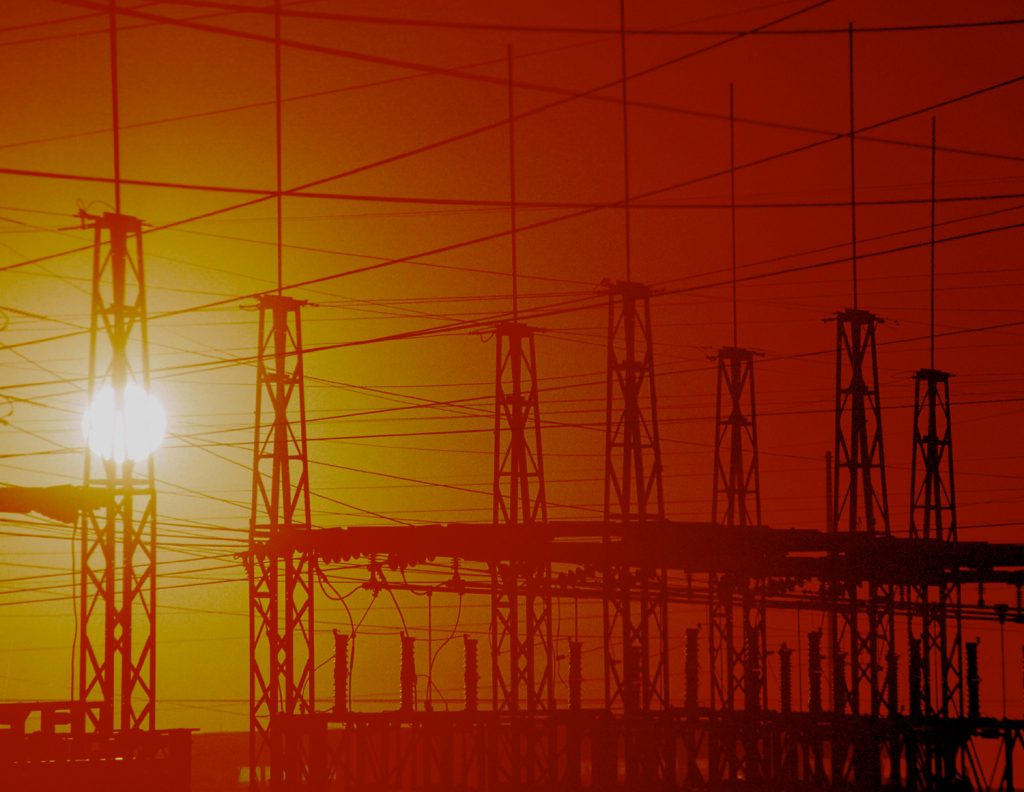
Download 300dpi JPEG image, ‘grid.jpg’, 448K (Media are welcome to download/publish this image with related news stories.)
ALBUQUERQUE, N.M. — A recent Department of Energy (DOE) study headed by Sandia National Laboratories suggests that major power emergencies like Monday’s statewide conservation alert in California might be averted if power companies adopt new command and control software that predicts future energy demand rather than simply responds to it.
DOE Secretary Bill Richardson has warned consumers since January that if last year’s series of major regional power outages are any indication, this summer might bring Y2K-like power failures to large areas of the nation as power companies struggle to meet peak daytime electricity drain prompted by widespread air conditioner use. (See his six recommendations for keeping the lights on at http://www.energy.gov/HQPress/releases00/aprpr/pr00116.htm.)
Traditionally power companies use state-of-health software tools to monitor how power is flowing from place to place, watch for the telltale signs of imminent outages, and determine whether additional power should be purchased from other companies to bolster reserves.
The DOE report concludes that these “deterministic” grid-monitoring tools are becoming outdated and that new, more sophisticated software tools based on probabilistic risk assessment are needed. Such command and control software would include various mathematical models, including those that simulate load flow, dispatch options, weather factors, contingencies, and more, according to the report.
They would, in a sense, help power plant operators predict the future — or at least quantify the likelihood of something happening and test the effects of responses hours or days in advance.
“The software tools power companies use to monitor and control the electric grid were not designed for the level of complexity and the number of transactions the system is experiencing today,” says Sandia’s Abbas Akhil, a member of a DOE-wide team looking at electric grid reliability issues. “They are not adequate for predicting and averting major outages of the future.”
The report also suggests further study of a “distributed power grid”: the idea that hundreds of traditional and nontraditional generation sources and storage devices — including wind turbines, solar collectors, and other generators — could supply power to the grid, enabling less reliance on large-scale power plants and giving the grid a broader, more stable foundation.
The report was prepared as part of DOE’s Transmission and Distribution Reliability Program aimed at improving the reliability of the nation’s electric grid as utility deregulation brings uncertain changes in the way the grid is managed.
As part of the program, DOE formed the Consortium for Electric Reliability Technology Solutions (CERTS) of utility companies, universities, and national labs to study and recommend solutions to grid-reliability issues. Each CERTS participating institution became lead on one written report, resulting in a set of six white papers that were finalized and released by DOE in November 1999. The papers’ topics range from technical hardware issues to an economic view of open market trends.
The Sandia-led paper, titled “Accommodating Uncertainty in Planning and Operations,” compares the relative uncertainties in both the regulated and restructured business environments and recommends new software tools to manage the higher degrees of uncertainty inherent in a restructured market. The paper, authored by a team led by Sandia’s Mark Ivey, is available at http://certs.lbl.gov/grid.html.
“There is potential for major financial disruptions in this country because we are putting stresses on our infrastructures they were never designed to handle,” says Margie Tatro of Sandia’s Critical Infrastructure Protection program. “Major summertime power outages point to the need for a new way of thinking about the power grid as a system.”
More information about Sandia’s electric reliability research and Critical Infrastructure Protection program is available at http://www.sandia.gov/LabNews/LN02-11-00/grid_story.html.
The final report of DOE’s Power Outage Study Team, formed to review last summer’s power outages, is available at http://www.policy.energy.gov. (click “Publications,” then “Reports,” then scroll down to “POST Final Report, Released March 13, 2000.”)